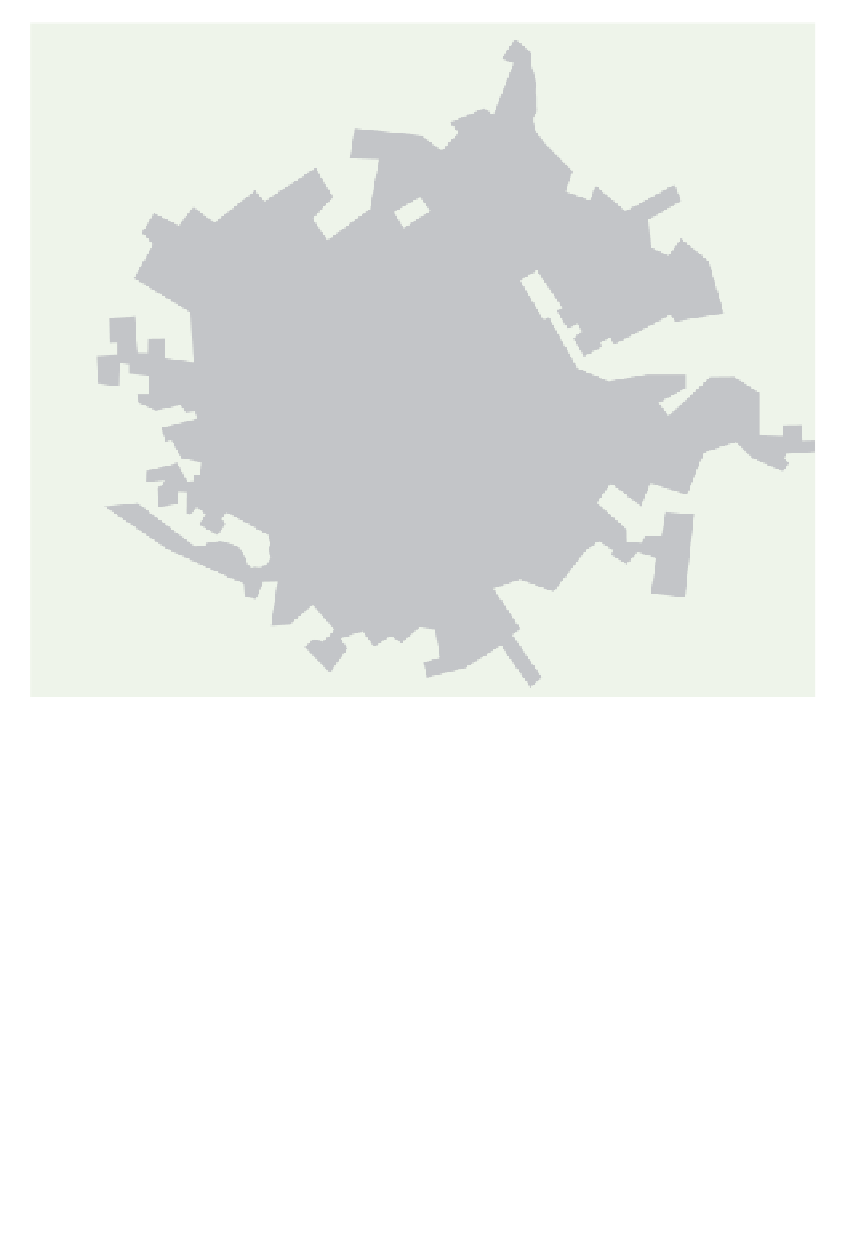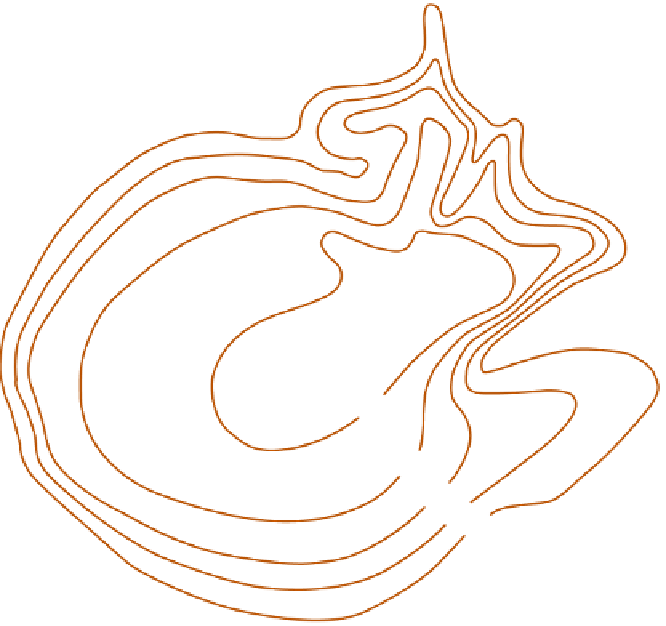Geoscience Reference
In-Depth Information
Built-up area
0
miles
10
0
km
10
Figure 12.27
Distribution of minimum temperatures (°C) in London on 14 May 1959, showing the
relationship between the 'urban heat island' and the built-up area.
Source: After Chandler (1965). By permission of Hutchinson.
urban-rural temperatures is related statistically
to population size, being nearly linear with the
logarithm of the population. For New York, about
one-third of the warming since 1900 is attributed
to the heat island effect and the rest to regional
climate change. At Central Park, New York the
heat island strength in 2007 was ~ 2.5
A convincing example of the relationship
between urban growth and climate is for Tokyo,
which expanded greatly after 1880 and parti-
cularly after 1946 (
Figure 12.28A
). The population
increased to 10.4 million in 1953 and to 11.7
million in 1975. During the period 1880-1975,
there was a significant increase in mean January
minimum temperatures and a decrease in the
number of days with minimum temperatures
below 0°C (
Figures 12.28B
and
C
). Although the
graphs suggest a reversal of these trends during
War II (1942-1945), when evacuation almost
halved Tokyo's population, it is clear that the basis
of correlations of urban climate with population
C. In North
America, the maximum urban-rural temperature
difference reaches 2.5
°
C
for cities of 100,000 and 12°C for cities of one
million people. European cities show a smaller
temperature difference for equivalent popula-
tions, perhaps as a result of the generally lower
building height.
°
C for towns of 1000, 8
°







































